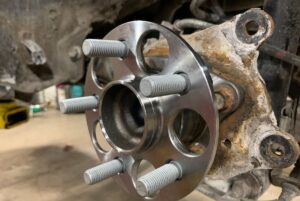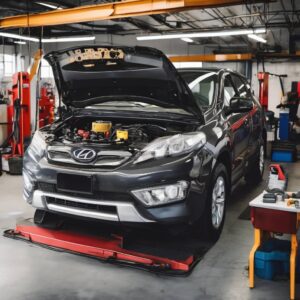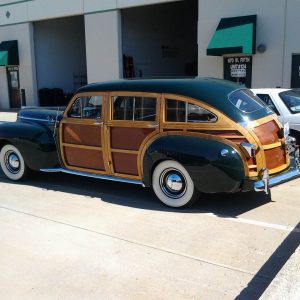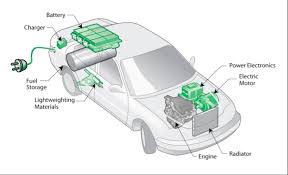Common Causes of Scraping or Grinding When Starting Your Car
1. Worn Starter Motor or Starter Bendix
The starter motor is responsible for turning your engine over when you start your car. If the starter gear (or Bendix) is worn or misaligned, it may grind against the engine’s flywheel or flexplate.
Symptoms:
- Grinding noise immediately when turning the key or pressing the start button.
- Engine hesitates to start or starts slowly.
- Grinding stops after the engine starts.
What to Do:
- Have the starter motor inspected. If the gear is damaged or the motor is failing, it may need to be replaced.
- Continuing to start your car with a bad starter can damage the flywheel, leading to more expensive repairs.
2. Loose or Damaged Heat Shields
Heat shields protect various parts of your car from the intense heat of the exhaust system. Over time, they can become loose, bent, or rusted, causing them to rattle or scrape against nearby components—especially when the engine vibrates at startup.
Symptoms:
- Scraping or rattling noise, particularly during engine start or idle.
- The sound may disappear once the engine warms up or settles.
What to Do:
- Have the heat shields inspected and tightened or replaced if needed.
- This issue isn’t typically dangerous, but ignoring it can lead to further damage or annoying sounds.
3. Bad Serpentine Belt or Pulleys
The serpentine belt powers your car’s alternator, AC, power steering, and more. If it’s worn, frayed, or one of the pulleys is failing, it can create a scraping or grinding sound during startup.
Symptoms:
- Squealing, scraping, or grinding noise from the front of the engine.
- Noise may lessen or disappear after the engine runs for a few moments.
What to Do:
- Check the belt for cracks, glazing, or wear.
- Inspect the pulleys for looseness or bearing failure.
- Replace the belt and/or faulty pulley as needed.
4. Brake Dust Shield Rubbing
A brake dust shield is a thin metal plate behind each brake rotor. If it becomes bent (commonly from rough roads or tire work), it may scrape against the rotor when the car starts moving.
Symptoms:
- Scraping noise that may come from one wheel area.
- The noise can be continuous when the car moves, not just at startup.
- May change with turning or braking.
What to Do:
- Inspect the dust shields around each wheel.
- They can often be bent back into place or replaced easily and inexpensively.
5. Worn Engine or Transmission Mounts
Engine and transmission mounts hold the powertrain in place. If they’re worn or broken, the engine may shift slightly during startup, causing components to rub or scrape.
Symptoms:
- A brief grinding or scraping noise as the engine starts and moves.
- Unusual vibrations while driving or idling.
- Clunks when shifting gears.
What to Do:
- Have a mechanic inspect your engine mounts.
- Replacing them can prevent further drivetrain stress or misalignment.
6. Frozen or Rusted Brake Components (in Cold or Wet Weather)
In cold or damp environments, moisture can cause surface rust to form on your brake rotors. When you start the car and begin to move, you may hear a scraping sound until the rust wears off.
Symptoms:
- Scraping noise after the car has been sitting overnight.
- The noise disappears after driving and braking a few times.
- Most common in humid, rainy, or snowy weather.
What to Do:
- This is typically harmless, but if the sound persists or worsens, have the brakes checked.
- Regular driving will usually clear surface rust.
7. Transmission or Clutch Issues (Manual Vehicles)
In manual cars, a failing clutch release bearing or problems with the transmission input shaft can cause a grinding noise when starting or shifting.
Symptoms:
- Grinding or scraping noise when engaging or disengaging the clutch.
- Difficulty shifting gears.
- Vibration or pulsing in the clutch pedal.
What to Do:
- Visit a trusted mechanic—transmission or clutch issues should be addressed quickly to prevent costly repairs.
Is It Safe to Drive If You Hear Scraping or Grinding at Startup?
It depends on the cause:
- Safe but Annoying: Loose heat shield, brake dust shield, or light surface rust on brakes.
- Urgent Attention Needed: Bad starter motor, failing pulley, or engine mount issues.
- Unsafe to Drive: Grinding from the transmission or brakes that worsens when driving.
If you’re unsure, it’s best to err on the side of caution and have your vehicle inspected by a professional.
What Should You Do Next?
- Note When the Noise Happens
- Only during startup?
- While driving or turning?
- When it’s cold or wet?
- Identify the Sound
- Is it high-pitched, metallic, deep, or rhythmic?
- Do a Quick Visual Check (if safe)
- Look under the car for loose heat shields or hanging components.
- Check under the hood for worn belts or visibly loose pulleys.
- Schedule an Inspection
- A qualified mechanic can pinpoint the issue quickly.
- Ask for a written estimate and diagnostic before authorizing major repairs.
Conclusion
A scraping or grinding noise when you start your car is a warning you shouldn’t ignore. While it may turn out to be a simple fix, it could also signal a more serious problem that can lead to bigger repairs—or safety issues—down the road. Whether it’s a worn starter, a dragging heat shield, or rusted brakes, diagnosing the problem early is key to avoiding stress, saving money, and staying safe on the road.
Hear something strange when you turn the key? Don’t guess—get it checked! Your ears might just be the best early-warning system your car has. 🛠️🔧🚗






